Table of Contents
- Introduction
- Why Spice Matters in Chili
- The Basics: What Makes a Classic Chili?
- Innovative Spice Pairings for Chili
- Step-by-Step Recipe: Fire & Soul Chili
- Pro Tips and Tricks
- The Flavor Chemistry Behind Successful Pairings
- Visual Guide: Spice Pairing Comparison Table
- Conclusion
- Frequently Asked Questions
Introduction: Who Needs Boring When You Can Have Bold?
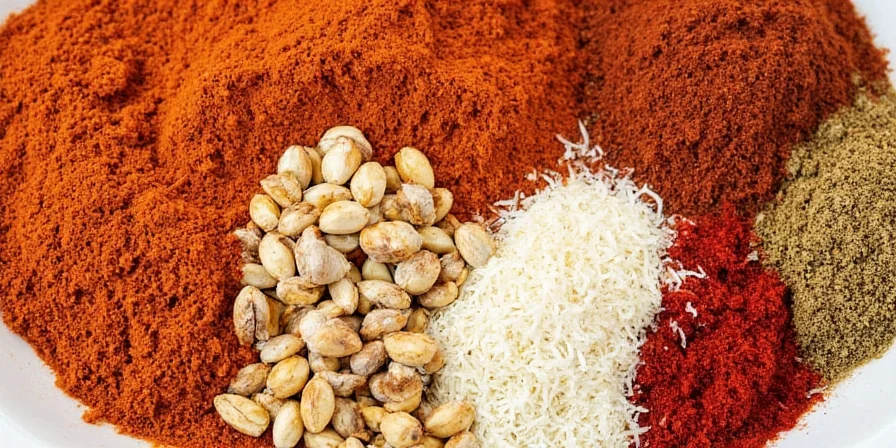
Welcome, home chefs seeking to transform ordinary chili into extraordinary meals! If you're tired of predictable chili recipes that deliver the same one-dimensional heat without complexity, this guide provides the missing framework for creating truly memorable dishes.
Unlike conventional approaches that simply list random spice combinations, we'll explore the scientific principles behind why certain pairings create synergistic flavor experiences. This resource delivers practical value specifically for home cooks who understand basic chili preparation but want to master flavor layering through evidence-based spice chemistry.
Let's unlock the hidden dimensions of chili craftsmanship!
Why Spice Matters in Chili
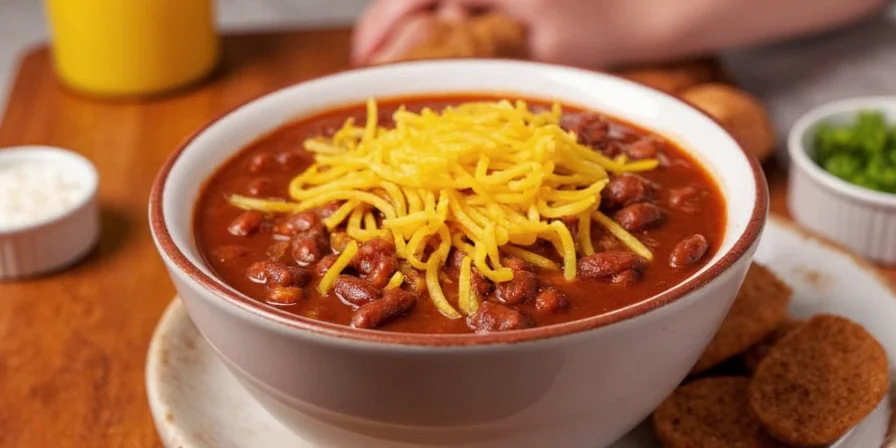
Spices function as culinary catalysts that transform basic ingredients through chemical interactions. When properly paired, they don't merely add heat—they create new flavor compounds through Maillard reactions and molecular bonding that can't be achieved by single spices alone.
Consider your chili's flavor profile as a three-dimensional experience: base notes (meat, beans), middle notes (aromatics, tomatoes), and top notes (spices). Most home recipes focus only on the top layer of heat without developing the full aromatic spectrum. The difference between adequate and exceptional chili lies in understanding how spice compounds interact at the molecular level to create entirely new taste sensations.
The Basics: What Makes a Classic Chili?

Before exploring advanced techniques, ensure your foundation is solid:
- Meat: High-fat ground beef (80/20) provides necessary lipids to carry fat-soluble flavor compounds.
- Tomatoes: Acidic components help release volatile compounds from spices.
- Beans: Legumes contain proteins that bind with spice molecules, affecting flavor release timing.
- Stock: Proper liquid ratio maintains optimal concentration for flavor compound extraction.
- Base Spices: Cumin (earthiness), smoked paprika (depth), and garlic (umami) form the essential flavor framework.
Mastering these fundamentals creates the canvas upon which innovative spice chemistry can truly shine.
Innovative Spice Pairings for Chili
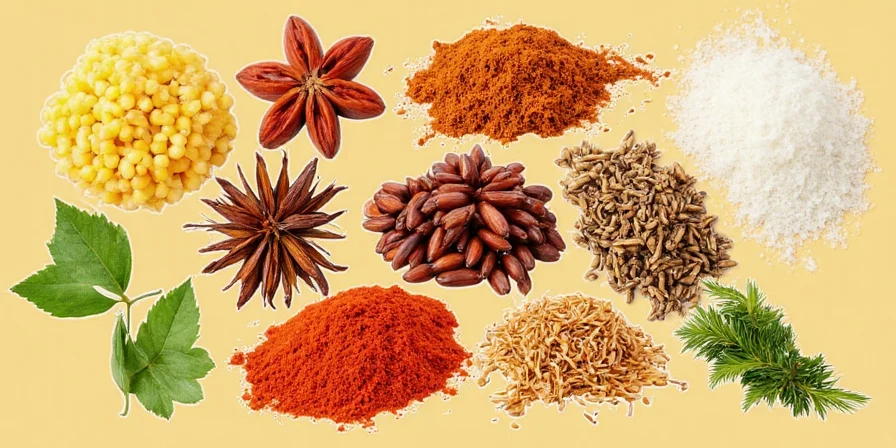
These pairings work because they exploit specific chemical interactions between spice compounds. Each combination creates new flavor dimensions through molecular synergy:
- Cinnamon + Espresso Powder: Cinnamaldehyde in cinnamon binds with caffeine molecules, creating a deeper, more complex sweetness that mimics mole sauces without additional ingredients.
- Ancho Chile Powder + Allspice: Capsaicinoids in ancho interact with eugenol from allspice to produce a fruit-forward warmth without excessive heat.
- Fennel Seeds + Coriander: Anethole in fennel combines with linalool in coriander to create a bright, herbaceous note that cuts through fatty meats.
- Nutmeg + Cayenne: Myristicin in nutmeg tempers capsaicin's burn, creating a warming sensation that lingers rather than assaults.
- Lime Zest + Aleppo Pepper: Citrus limonene enhances the fruity notes in Aleppo's mild capsaicin profile while balancing acidity.
- Smoked Salt + Sumac: Potassium in smoked salt amplifies sumac's citric acid, creating a tangy lift that refreshes heavy meat dishes.
- Garam Masala + Chipotle in Adobo: The complex blend of garam masala's multiple spices interacts with chipotle's smoked capsaicin to create layered heat with varying burn profiles.
- Fenugreek + Cocoa Powder: Sotolon in fenugreek mimics maple compounds that complement cocoa's polyphenols for deep, meat-enhancing richness.
- Sichuan Peppercorns + Star Anise: Hydroxy-alpha sanshool creates the numbing effect that contrasts beautifully with star anise's anethole-driven sweetness.
- Brown Sugar + Turmeric: Sucrose molecules bind with curcumin, reducing bitterness while enhancing turmeric's earthy notes.
The Flavor Chemistry Behind Successful Pairings
Understanding why certain spices work together requires examining their molecular interactions. Flavor pairing theory suggests that ingredients sharing key volatile compounds will complement each other. In chili preparation, three critical chemical processes occur:
- Heat Activation: Many spice compounds (like capsaicin) are fat-soluble and require proper heating in oil to release fully.
- Acid Interaction: Tomatoes' citric and malic acids help extract specific flavor compounds from spices.
- Time-Dependent Release: Different spice compounds release at varying rates during cooking, creating evolving flavor profiles.
For example, when combining cinnamon and espresso powder, the caffeine molecules bond with cinnamaldehyde at specific temperature thresholds (around 160°F/71°C), creating a new compound with richer, more complex sweetness than either ingredient alone. This scientific understanding transforms random experimentation into reliable culinary technique.
Step-by-Step Recipe: Fire & Soul Chili
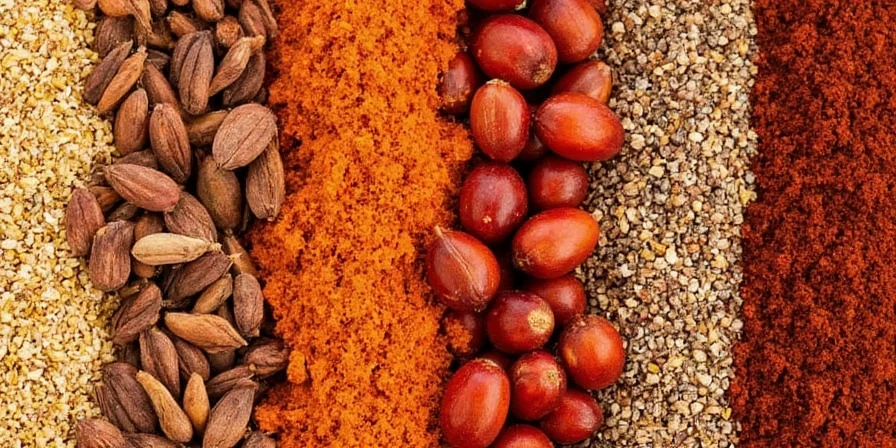
This recipe implements the flavor chemistry principles discussed, with precise timing to maximize molecular interactions between key spice compounds.
Ingredients
- 2 lbs ground beef (or plant-based alternative)
- 1 onion, diced
- 4 cloves garlic, minced
- 1 red bell pepper, chopped
- 2 cans (15 oz) kidney beans, drained and rinsed
- 1 can (28 oz) crushed tomatoes
- 2 tbsp tomato paste
- 2 cups beef broth (or vegetable broth)
- 1 tbsp olive oil
- 1 tsp cinnamon
- ½ tsp espresso powder
- 1 tsp fennel seeds
- 1 tsp coriander
- 1 tsp nutmeg
- ½ tsp cayenne
- 2 tsp smoked paprika
- 1 tsp cumin
- 1 tsp salt
- ½ tsp black pepper
- 1 tsp lime zest
- 1 tbsp brown sugar
Instructions
- Sauté Aromatics: In a large pot or Dutch oven, heat olive oil over medium heat. Add onions and garlic, sauté until fragrant and translucent (~3–5 minutes). This initial step releases volatile compounds from aromatics.
- Brown the Meat: Add ground beef (or substitute). Cook until browned and crumbled. Drain excess fat if needed. Proper browning creates Maillard reaction products essential for flavor depth.
- Add Vegetables: Stir in red bell pepper and cook for another 2–3 minutes. Vegetables add natural sugars that caramelize and enhance spice compound extraction.
- Layer the Spices: Add all the spices—fennel seeds, coriander, smoked paprika, cumin, cinnamon, espresso powder, nutmeg, cayenne, lime zest, salt, and pepper. Stir well to coat everything evenly. The order matters: hard spices first, delicate compounds later.
- Pour in Liquids: Add crushed tomatoes, tomato paste, and beef broth. Stir until combined. Acidic tomatoes help extract specific flavor compounds from the spices.
- Simmer: Bring to a boil, then reduce heat to low. Cover and simmer for at least 30 minutes, stirring occasionally. For deeper flavor, simmer up to 2 hours. Time allows for molecular bonding between spice compounds.
- Add Beans: Stir in kidney beans during the last 10–15 minutes of cooking. Adding beans late prevents them from breaking down and releasing starches that might bind too many flavor compounds.
- Finish with Brown Sugar: Sprinkle in brown sugar and stir to balance acidity and spice. Sugar molecules bind with bitter compounds, smoothing the flavor profile.
- Rest and Serve: Let chili rest for 10 minutes before serving. This crucial step allows flavor compounds to stabilize and integrate fully.
Pro Tips and Tricks

- Toasting Spices: Toast whole spices like fennel seeds and coriander in a dry pan before grinding them for more intense flavor. Heating releases volatile compounds essential for flavor development.
- Acid Balance: A splash of apple cider vinegar at the end balances richness and lifts flavors by enhancing volatile compound release.
- Heat Control: Add cayenne in stages rather than all at once. Capsaicin compounds release differently at various temperatures.
- Make Ahead: Chili tastes better the next day! Refrigerate overnight to allow additional time for molecular bonding between flavor compounds.
- Freeze It: Portion out chili in bags or containers and freeze for up to 3 months. Freezing can actually enhance certain flavor interactions when properly thawed.
Visual Guide: Spice Pairing Comparison Table
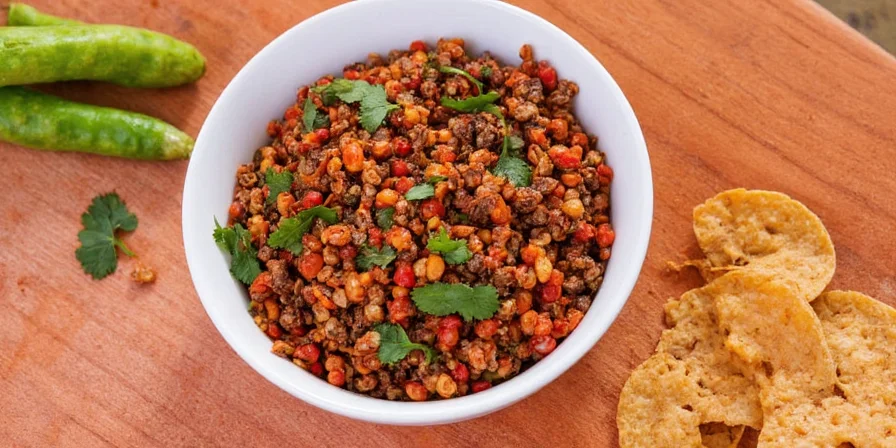
| Spice Pairing | Key Chemical Interaction | Optimal Addition Timing | Flavor Transformation |
|---|---|---|---|
| Cinnamon + Espresso Powder | Cinnamaldehyde binds with caffeine | During initial spice layering | Creates deeper, more complex sweetness |
| Ancho Chile + Allspice | Capsaicinoids interact with eugenol | With tomato liquids | Produces fruit-forward warmth |
| Fennel + Coriander | Anethole combines with linalool | With aromatics | Creates bright, herbaceous notes |
| Nutmeg + Cayenne | Myristicin tempers capsaicin | During simmering phase | Creates warming sensation that lingers |
| Lime Zest + Aleppo Pepper | Limonene enhances fruity notes | Final 10 minutes of cooking | Provides bright, balanced heat |
Conclusion: Mastering Chili Flavor Chemistry
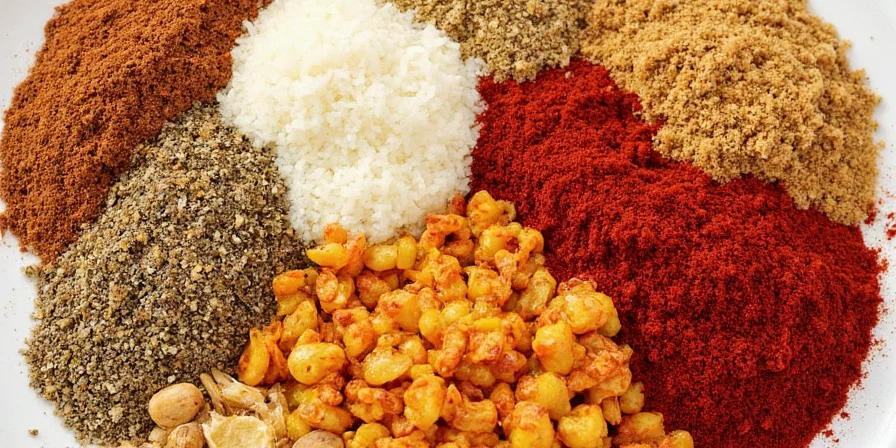
Creating exceptional chili isn't about random spice combinations—it's about understanding the chemical interactions that transform simple ingredients into complex flavor experiences. By applying these flavor chemistry principles, you're no longer just following recipes but engaging in culinary science that reliably produces outstanding results.
The most successful chili makers approach their craft with both creativity and precision, understanding when to add specific spices to maximize molecular interactions. This scientific approach separates adequate chili from truly memorable meals that keep people coming back for seconds—and thirds.
Now that you understand the why behind successful pairings, you can confidently experiment beyond these suggestions, creating your own signature combinations based on predictable chemical principles rather than random chance.
Frequently Asked Questions
Why do certain spice combinations create better flavor than others?
Specific spice compounds interact at the molecular level to create new flavor dimensions. For example, cinnamaldehyde in cinnamon bonds with caffeine molecules from espresso powder, producing a more complex sweetness than either ingredient alone. Understanding these chemical interactions allows for predictable, successful pairings rather than random experimentation.
When is the optimal time to add different spices during chili preparation?
Timing matters significantly. Hard spices like cumin and coriander should be added early with aromatics to release their volatile compounds. Delicate compounds like lime zest work best in the final 10 minutes to preserve their volatile oils. Heat-sensitive compounds like capsaicin from cayenne benefit from gradual addition throughout cooking to control heat intensity.
How does acidity affect spice compounds in chili?
Acidity from tomatoes or vinegar helps extract specific flavor compounds from spices. The citric and malic acids in tomatoes interact with spice molecules, enhancing certain flavor dimensions while suppressing others. Adding a splash of vinegar at the end can further lift flavors by increasing the volatility of certain aroma compounds.
Why does chili taste better the next day?
The improved flavor comes from continued molecular interactions between spice compounds during refrigeration. Over time, flavor molecules bond and create new compounds, resulting in more integrated, complex flavors. This process allows initially separate flavor elements to merge into a harmonious whole.
Can I substitute fresh spices for dried in these pairings?
Yes, but with adjustments. Fresh spices contain higher moisture content and different volatile compound concentrations. As a general rule, use three times the amount of fresh spice to equal dried. Fresh herbs like cilantro or parsley added at the end can complement dried spice bases by providing bright top notes that dried spices lack.











 浙公网安备
33010002000092号
浙公网安备
33010002000092号 浙B2-20120091-4
浙B2-20120091-4